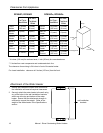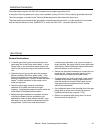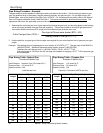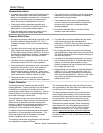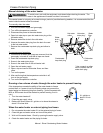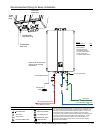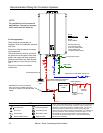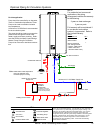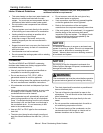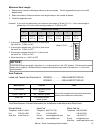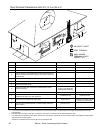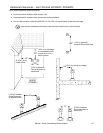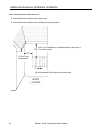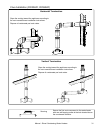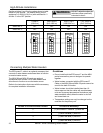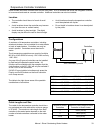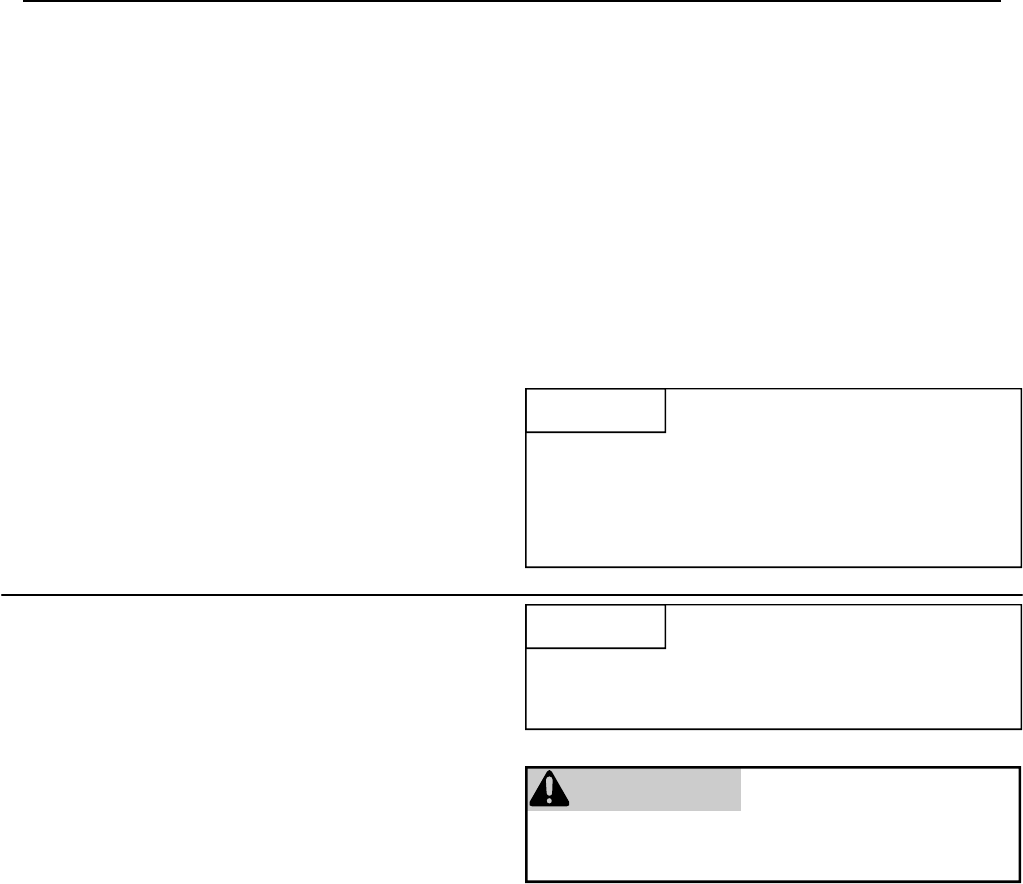
26 Manual - Rinnai Condensing Water Heaters
Venting Instructions
• This water heater is a direct vent water heater and
therefore is certified and listed with the vent
system. You must use vent components that are
certified and listed with the water heater model.
• Do not combine vent components from different
manufacturers.
• The vent system must vent directly to the outside
of the building and use outside air for combustion.
• Venting should be as direct as possible with a
minimum number of pipe fittings.
• Avoid dips or sags in horizontal vent runs by
installing supports per the vent manufacturer’s
instructions.
• Support horizontal vent runs every four feet and all
vertical vent runs every six feet or in accordance
with local codes.
• Vent diameter must not be reduced.
• Do not connect the venting system with an existing
vent or chimney.
• Do not common vent with the vent pipe of any
other water heater or appliance.
• Vent connections must be firmly pressed together
so that the gaskets form an air tight seal.
• Refer to the instructions of the vent system
manufacturer for component assembly instructions.
• If the vent system is to be enclosed, it is suggested
that the design of the enclosure shall permit
inspection of the vent system. The design of such
enclosure shall be deemed acceptable by the
installer or the local inspector.
Intake / Exhaust Guidelines
Refer to the specific instructions on your vent product for
additional installation requirements.
NOTICE
If it becomes necessary to access an enclosed vent
system for service or repairs, Rinnai is not responsible
for any costs or difficulties in accessing the vent
system. Warranty does not cover obtaining access to
an enclosed vent system.
• Use only vent that is approved and identified as
acceptable for condensing appliances.
• Do not use aluminum, PVC, CPVC, ABS or
galvanized material to vent this appliance.
• Slope the venting toward the appliance according to
the vent manufacturers installation instructions.
• All condensate must drain and dispose of per local
codes.
• If the condensate drain gets blocked, an error code
will display on the controller. If this occurs, the
condensate drain must be cleaned.
• The condensate trap will automatically prime (self-
prime) during operation of the unit as condensate
forms. Condensate draining from the unit indicates
that the trap is full and that there is no blockage in
the condensate drain. It is not necessary to add
water to the condensate trap.
• Use only PVC or CPVC pipe for the condensate
drain line.
• The drain pipe (along its entire length) must be at
least the same diameter as the drain line, (1/2 inch
NPT).
Condensate
The Rinnai RC80HPi and RC98HPi condensing
tankless water heaters are factory equipped with a
condensate trap and drain line.
NOTICE
Do not plug or cap the integrated condensate line.
Without proper drainage or disposal, condensate will
damage the water heater.
WARNING
The condensate trap must be primed before operation
to prevent exhaust gases from entering the building
• The drain pipe should be as short as possible and
have a downward pitch.
• The end of the drain pipe should be open to the
atmosphere. The end should not be under water or
other substances.
• Do not connect the drain pipe directly to the rain
sewer.
• Do not connect the condensate drain line with an
air conditioning evaporator coil drain.
• To minimize freezing of the condensate, run the
condensate drain line through an interior wall or
between insulation and an interior wall.



